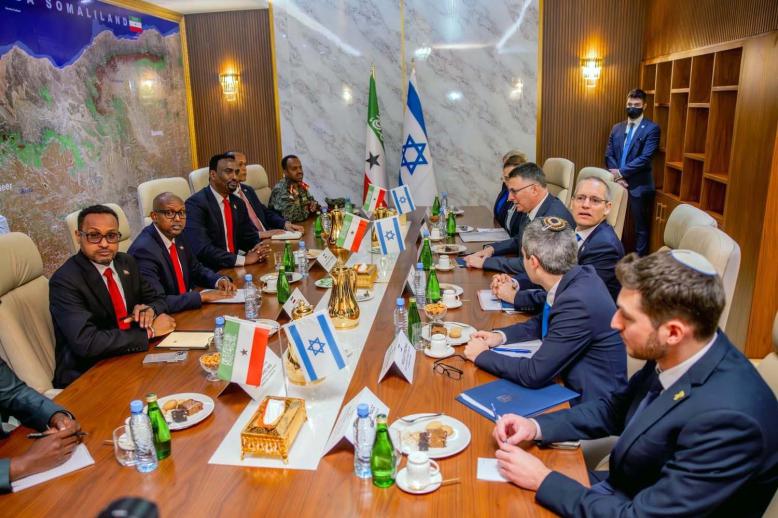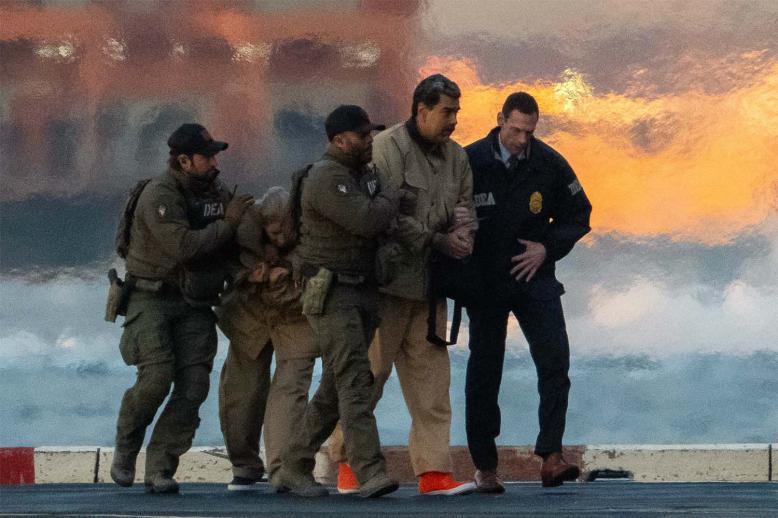Al-Qaeda 2.0 emerges from power struggles"
BEIRUT — There seems little doubt that al-Qaeda has not only survived a global onslaught and severe internal ruptures but has overcome the loss of its founder, Osama bin Laden, and other leaders in a US-led campaign of assassination to quietly rebuild itself into a force that boasts as many as 40,000 hardcore fighters.
“Nearly seven years after the killing of Osama bin Laden, al-Qaeda is numerically larger and present in more countries than at any other time in its history,” US analyst Bruce Hoffman has observed.
In the four years it took the Americans to dispatch al-Qaeda’s savage offspring, the Islamic State (ISIS), and shatter its self-proclaimed caliphate in Iraq and Syria, al-Qaeda tended to its wounds and resurrected itself out of the debris left by the long and bruising ideological rift within the jihadist movement triggered by ISIS’s apocalyptic creed.
Bin Laden’s successor, the veteran Egyptian jihadist Ayman al-Zawahiri, has forged a restructured organisation that Hoffman, a specialist on terrorism and insurgency, says poses an unprecedented threat to the West and Muslim rulers who oppose al-Qaeda.
“From north-west Africa to south-east Asia, al-Qaeda has been able to knit together a global movement of some two dozen local franchises,” Hoffman wrote in an analysis for the US-based Council on Foreign Relations. Other analysts agree.
Zawahiri, often derided as lacking bin Laden’s charisma, held al-Qaeda together following the May 2011 killing of bin Laden in his Pakistani hideout by US special forces and the systematic elimination of other senior leaders in US President Barack Obama’s remorseless air strikes. Zawahiri expanded the organisation to include branches in strategically important zones.
Hoffman calculates that al-Qaeda, having survived the heaviest counterterrorism campaign undertaken by the West, has about “10,000-20,000 fighters in Syria, 7,000-9,000 in Somalia, 5,000 in Libya, 4,000 in Yemen, a similar number spread across the Maghreb and the Sahel, 3,000 in Indonesia and approximately 1,000 in South Asia.”
He made no mention of Central Asia, where large numbers of Muslims adhere to al-Qaeda’s brand of jihadism. Several thousand fighters from Central Asian organisations are in northern Syria and are believed to follow the policies of Zawahiri’s al-Qaeda Central, which he runs from hideouts in the Pakistan badlands.
Hoffman, who is a senior fellow at the US Military Academy’s Combating Terrorism Centre, added: “Advances in commercial digital communication tools… have enabled al-Qaeda’s leaders and commanders to maintain contact via secure end-to-end encryption…
“Accordingly, its leaders have been dispersed to Syria, Iran, Turkey, Libya and Yemen, with only a hardcore remnant of top commanders still in Afghanistan and Pakistan.”
Isaac Kfir, director of the National Security Programme at the Australian Strategic Policy Institute, observed that secure communications allow “al-Qaeda to adopt a ‘glocalist’ strategy that links local grievances with its globalist campaign.”
After the Iraq war, which spawned ISIS and its savage dogma, al-Qaeda had to contend with the challenge posed by the upstart group at a time when it had lost key leaders, ideologues, strategic thinkers and combat commanders.
The rift was centred in Syria, apex of the Middle East’s myriad conflicts and where, in 2014, ISIS proclaimed an Islamic caliphate after capturing large expanses of Iraq and Syria. ISIS’s success encouraged a significant number of al-Qaeda-affiliated militants to break with al-Qaeda central and its longer-term strategy.
The most significant of these was a mutiny within al-Qaeda ranks in northern Syria, in which Abu Mohammad al-Jolani, leader of al-Nusra Front, defected and set up a rival organisation. This led to bloodshed and deep fractures within the jihadist establishment.
Hoffman said Zawahiri’s strategy was designed “to protect its remaining senior leadership and discreetly consolidate its influence over wherever the movement had a significant presence.”
Zawahiri’s plan, he explained, was based on three strategic moves: “strengthening the decentralised franchise approach”; avoiding mass-casualty operations, “especially those that might kill Muslim civilians” and alienate large numbers of Muslims; and “letting ISIS absorb all the blows from the coalition arrayed against it” while al-Qaeda unobtrusively rebuilt its military strength.
This plan allowed the new al-Qaeda to portray itself as “moderate extremists — a less-unhinged and ostensibly more palatable rival to ISIS,” Hoffman added.
Zawahiri apparently made a fateful decision to avoid attacks on the United States and the West — for the time being, at least — to minimise actions that could threaten the development of the new al-Qaeda and give him time and space to firmly establish the new order.
It is not clear how long Zawahiri expects to maintain that pause. Al-Qaeda has not carried out a major attack in the West since four suicide bombers attacked London’s transportation system on July 7, 2005, killing 56 people, including the bombers, and wounding 700.
Its only foray in the West since then was the Charlie Hebdo killings in Paris on January 7, 2015, but he can presumably reactivate al-Qaeda’s external operations at any time he chooses. Indeed, Zawahiri’s new organisation is reportedly led by hardened veterans of such operations.
It should be noted that Zawahiri stressed in a March 20 rallying cry released through al-Qaeda’s communications arm, As-Sahab, that the United States remains the Muslim world’s “first enemy.”
He declared: “Here is our Muslim Ummah, so let us fight America everywhere as they transgress against us. Let us unite in confronting it and do not divide.”
One of the reasons ISIS lost its self-proclaimed caliphate was the widespread alienation of Muslims it ruled during its brief caliphate through its highly organised savagery and merciless interpretation of sharia.
In the early stages of its operations, al-Qaeda was guilty of alienating Muslims, mainly through its austere and intolerant form of Sunni Islam and hostility towards tribal interests and practices, which are prevalent in the Muslim world.
Zawahiri, however, long espoused a more moderate approach and played on ISIS’s brutal excesses to promote al-Qaeda’s interpretation of Muslim religious observance in his ideological battle with ISIS.
Thomas R. McCabe, a former US Defence Department counterterrorism analyst, observed in a Middle East Forum paper published on March 1: “To whatever degree al-Qaeda has learned from its mistakes and modified its strategy, the group’s recent adaptations make it more dangerous — and potentially more successful.”
McCabe concluded: “A war against a revamped al-Qaeda will be even more difficult than against existing jihadist groups. Since it will not threaten the West at home, it will be harder to marshal the will to resist… Such an al-Qaeda would be harder to defeat than ISIS and hence a bigger threat.”
Hoffman and his contemporaries agree that al-Qaeda 2.0 represents a major threat to the West, particularly from its Syrian and Yemeni branches.
Charles Lister, director of counterterrorism and extremism at the Middle East Institute who studied jihadists in the field for years, observes that, even with Zawahiri’s sweeping reorganisation, many committed jihadists remain outside the rebranded al-Qaeda, although they “remain wholly loyal to Osama bin Laden’s vision of global jihad.
“For these terrorists, the US remains enemy Number One and north-western Syria has become an invaluable safe-haven from which al-Qaeda can exert itself internationally,” he noted in a June 1 analysis.
“Many of these al-Qaeda loyalists have now coalesced with a new jihadist group known as Tanzim Huras al-Din, or the Religious Guardians Organisation,” which appears to fall within the ambit of Zawahiri’s new-look flagship organisation in Syria.
Lister warned: “Headed by al-Qaeda veterans, including at least three members of the group’s global leadership council, Huras al-Din is a deeply dangerous movement that poses a potent terrorist threat to US assets in the Middle East and beyond.”
Ed Blanche is a regular contributor to The Arab Weekly. He has covered Middle Eastern affairs since 1967.
Copyright ©2018 The Arab Weekly







